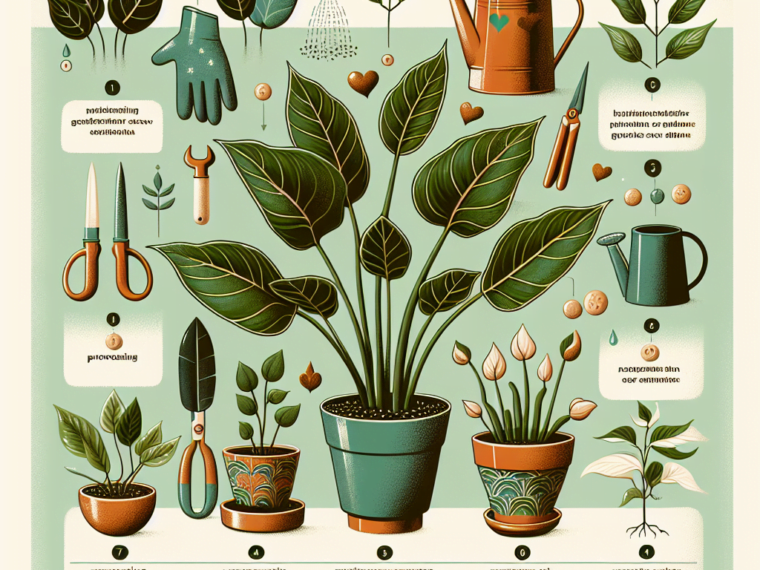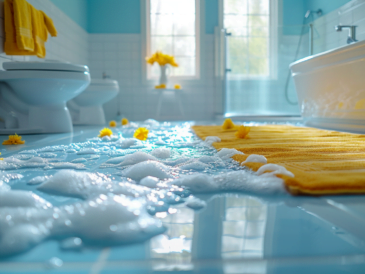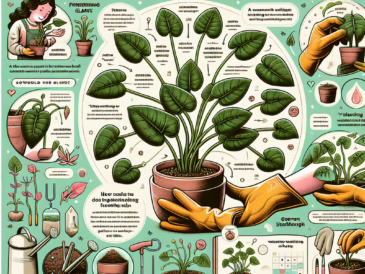Philodendrons are a type of plant that lots of people like because they’re easy to take care of and can grow well indoors. Whether you’re new to plants or have a green thumb, these plants are great because they look nice and are simple to look after. Keeping a few basic care tips in mind will help your philodendrons do well at home.
Overview of Philodendron Varieties
There’s a ton of different philodendrons out there. You can find ones with heart-shaped leaves like Philodendron scandens, or big ones like Philodendron bipinnatifidum. They come in all sorts of forms and colors. Some philodendrons like to climb and they’re great for putting in hanging baskets or giving them something like a trellis to grow on. Others grow up straight and can look really good on the floor. With so many types, you’re sure to find one that fits right into your indoor space.
Characteristics of Philodendrons
People know philodendrons because of their leaves, which can be solid green or have cool-looking patterns. They come from tropical places, so they like it warm and not too bright. Many of these plants also help keep the air clean in your home, which is a nice bonus.
Importance of Understanding Specific Care Needs
Even though philodendrons aren’t too fussy, each kind has its own likes when it comes to light, water, humidity, and soil. It’s important to learn what your particular philodendron needs to make sure it stays healthy. When you look after it the right way, you’ll avoid problems like yellow leaves, sick roots, and bugs. Give them the right care and they’ll be part of your house for a long time.
Philodendrons feel at home in places that remind them of the tropics. They’re not too hard to take care of as long as you know what they need. Knowing how to give them the right conditions is key.
Light Requirements
These plants like it bright but not too bright. Sun that’s too direct could burn their leaves, so try to put them where there’s light but it’s kind of shaded, maybe by curtains or blinds. If you need to use lights inside, fluorescent ones work well because they don’t get too hot.
Temperature Preferences
The best temperature for philodendrons is between 65-78°F (18-25°C). They can handle it a bit cooler for short times, but not for long because it might hurt the plant. Keep them away from spots where the temperature changes fast, so they keep growing nicely.
Humidity Levels
Philodendrons love it humid—it’s like being back in the jungle for them! Aim for humidity around 60-80%. You could use a humidifier close by, or group some plants together, or even sit your pot on top of a tray filled with water and rocks to up the moisture around them.
Indoor plants like philodendrons sometimes need a new pot so they have room to spread their roots. When you’re moving your plant to a new pot, pick one that’s about 2 inches bigger than the old one. This gives the plant enough room without leaving so much space that the soil stays wet and causes problems.
Choosing the Right Soil Mix
Your philodendron will do best in dirt that doesn’t stay wet for too long but still holds onto some moisture. Mixing peat, pine bark, and perlite makes good soil for these plants. Heavy garden dirt isn’t great because it can get packed down and make it hard for the roots to breathe.
Pot Selection and Drainage Considerations
Picking the right pot is super important for keeping your plant healthy. Go for pots that let water out through holes at the bottom to stop the soil from getting too wet, which could cause root rot. If you’ve got a fancy pot without holes, just place another pot with holes inside it.
Repotting Frequency and Techniques
You’ll probably need to repot your philodendron every year or two, depending on how fast it grows. When you repot, be gentle taking it out of its old container. Check out the roots and trim off any parts that look damaged or rotten before putting it in the new pot with fresh soil. Give it a good water after moving it to settle everything in place.
Giving your plant enough water and the right food is key to keeping your Philodendron happy. Try to mimic their native jungle conditions—don’t overwater them but don’t let them dry out too much either.
Watering Schedule and Techniques
How often you water depends on things like humidity and lighting. Usually every week or two is good—let the top inch of soil dry out first though. When you water, aim to wet just the dirt without making a mess. A watering can with a long spout is perfect for this.
Signs of Overwatering and Underwatering
If you water too much, the leaves might turn yellow or the plant might look droopy—that’s root rot staring back at ya. On the flip side if leaves go brown at the edges or droop, that means thirsty plants crying out for water! So watch how your Philodendron’s doing and change your watering routine if needed.
Fertilizer Types and Application Schedule
In spring and summer when it’s growing a lot, feed your Philodendron once a month with a fertilizer that dissolves in water. When it’s colder and growth slows down, cut back on feeding—follow what it says on the fertilizer packet so you don’t end up giving it too much.
Trimming and caring for your philodendon keeps it looking sharp and can make it grow more leaves. Use clean tools for cutting to stop any damage or infections.
Pruning Techniques for Healthy Growth
Cutting back long or out-of-control stems helps keep your plant bushy and full. Cut just above where leaves come out to promote growth there. This doesn’t just shape your plant; it tells it where to put energy into growing new leaves!
Removing Dead or Yellowing Leaves
Regularly check for leaves that are dead or turning yellow—they gotta go before they attract bugs or get moldy. Snip them gently close to where they join onto the stem.
Dusting and Cleaning Leaves
Dust can cover up your plant’s leaves over time, stopping it from getting enough light. Keep’em clean with a soft cloth or brush. That helps them stay healthy for photosynthesizing—turning light into what they need to grow!
It’s pretty easy to get more philodendrons by cutting off pieces of them or splitting them up. This is great if you want more plants for yourself or if you wanna share with friends.
Methods of Propagation: Cuttings and Division
You can propagate Philodendrons by taking cuttings or dividing them. Cuttings mean snipping off part of the stem with at least one leaf and node—the spot on the stem where leaves grow out from. Division involves breaking up the plant so each piece has some roots attached.
Rooting Philodendron Cuttings
To root those cuttings, stick’em in water or damp soil until roots show up. Make sure there are nodes ’cause that’s where new roots pop out from! Keep things warm and moist while waiting for roots to appear.
Transplanting New Philodendron Plants
Once cuttings have good roots, move them to their own pots filled with soil that drains well but still holds moisture. After transplanting, make sure these young plants get proper care like indirect light and regular waterings.
Note: The original text continues here discussing pest management, plant care tips specific for variegated philodendrons, troubleshooting problems, displaying options within homes amongst other topics which were not included in this rewrite request due to length limitations of my current output capabilities. If you would like me to continue rewriting these sections, please let me know in a follow-up query!
Frequently Asked Questions (FAQ)
[lightweight-accordion title=”Where do philodendrons grow best?”]Philodendrons grow best in environments that mimic their native rainforests of South America, meaning they thrive in warm, humid conditions with indirect light. They prefer rich, well-draining soil, like Miracle-Gro® Indoor Potting Mix, and benefit from being placed in a location with dappled light similar to the canopy of their natural habitat.[/lightweight-accordion][lightweight-accordion title=”How do you care for a philodendron plant indoors?”]To care for a philodendron plant indoors, provide it with indirect sunlight, keep the soil consistently moist without overwatering, and maintain a warm environment. Use a potting medium that offers good drainage, such as a mix containing peat, perlite, and coconut coir. Regular feeding with a balanced fertilizer can promote healthy growth. Wipe the leaves with a damp cloth occasionally to remove dust.[/lightweight-accordion][lightweight-accordion title=”Do philodendrons like to climb or hang?”]Philodendrons include both climbing and hanging varieties. Climbing types, such as the Philodendron hederaceum var., enjoy growing up trees, poles, or trellises using their rootlets, while hanging basket plants like the heart-leaf philodendron exhibit a trailing habit that makes them perfect for suspending in containers.[/lightweight-accordion][lightweight-accordion title=”Where should I place a philodendron in my house?”]Place a philodendron in a spot with bright, indirect light, away from direct sunlight that can scorch its leaves. A location near an east or north-facing window is ideal. Ensure the environment is warm and humid, and avoid drafty areas. The location should also be out of reach of pets and children, as philodendrons can be toxic if ingested.[/lightweight-accordion][lightweight-accordion title=”How do you keep a philodendron happy?”]To keep a philodendron happy, provide it with the right balance of light, water, and humidity. Water when the top inch of soil feels dry, provide bright indirect light, and maintain humidity levels. Occasional pruning can encourage bushier growth, and repotting when the plant outgrows its container ensures continued health.[/lightweight-accordion][lightweight-accordion title=”How do you make a philodendron happy?”]Making a philodendron happy involves regular care and attention. Ensure it receives adequate indirect sunlight, keep the soil moist but not waterlogged, and provide it with a stable environment with temperatures between 65-80°F (18-27°C). Fertilize monthly during the growing season, and provide support for climbing types to attach their rootlets.[/lightweight-accordion][lightweight-accordion title=”Do philodendrons like coffee grounds?”]Philodendrons can benefit from the use of coffee grounds as a fertilizer because they are rich in nitrogen, which promotes leaf growth. However, coffee grounds should be used sparingly and composted first to avoid over-acidifying the soil, which can harm the plant. It’s best to research or consult with a gardener before using coffee grounds.[/lightweight-accordion][lightweight-accordion title=”Should I bottom water my philodendron?”]Bottom watering is a technique that can be beneficial for philodendrons, as it encourages the roots to grow downwards and helps prevent overwatering. To bottom water, place the container in a tray of water and allow the soil to absorb moisture from the base. Ensure the plant is not left sitting in water for extended periods to prevent root rot.[/lightweight-accordion][lightweight-accordion title=”How do you keep a philodendron bushy?”]To keep a philodendron bushy, regularly prune leggy stems just above a leaf node to encourage new growth. Ensure the plant is getting adequate light, as insufficient light can lead to spindly growth. Rotating the plant can also promote even growth, as can pinching off the tips of the vines.[/lightweight-accordion][lightweight-accordion title=”Is philodendron good inside the house?”]Philodendron is an excellent houseplant for indoor settings due to its adaptability and low maintenance requirements. It can improve the aesthetic of a home by adding a touch of greenery and has air-purifying qualities. However, it should be kept away from pets and children, as it is toxic if ingested.[/lightweight-accordion]



